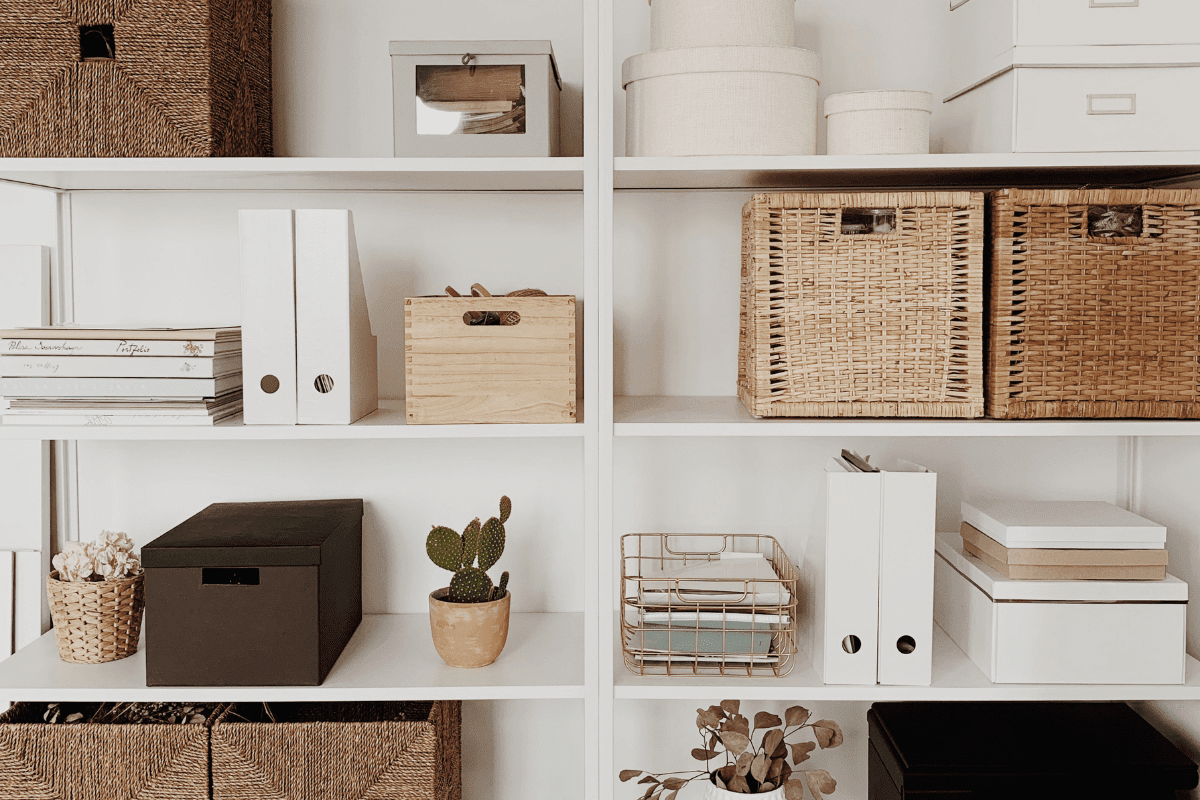If you're reading this while scrolling your phone in bed at 11:47 PM, wondering why you can't fall asleep… the good news is that building an actually useful nighttime routine doesn't require becoming a wellness guru or buying $200 silk pajamas. It just takes a few strategic tweaks that work with your real life, not against it.
The framework that actually works
Forget those elaborate hour-long routines you see on social media. Most of us barely have time to brush our teeth, let alone light candles and journal about gratitude. The 60-30-10 framework breaks down your wind-down time into manageable chunks that you can actually stick to.
60 minutes before bed: Digital sunset
This is when you start separating yourself from the chaos of the day. Turn off all screens (yes, even that "quick" Instagram check that somehow turns into 45 minutes of watching someone organize their spice rack). Dim the lights throughout your house and handle those final daily tasks like setting out tomorrow's clothes or prepping your coffee maker.
Think of this as your transition period from "day mode" to "sleep mode." Your brain needs time to downshift, kind of like how you can't slam on the brakes going 70 mph and expect a smooth stop.
30 minutes before bed: Active relaxation
This is where you do something that actively promotes relaxation. Pick one or two activities that actually appeal to you:
- Warm bath or shower
- Light stretching or yoga
- Reading (not work stuff)
- Journaling or brain dump
- Meditation or breathing exercises
- Gentle music or podcasts
The key word here is "active." You're not just sitting there waiting to feel sleepy. You're doing things that help your body and mind transition toward sleep.
A warm bath works particularly well because it temporarily raises your body temperature, then the cooling effect afterward mimics your natural temperature drop and makes you feel drowsy. It's basically tricking your body into thinking it's time to sleep.
10 minutes before bed: Final preparation
This is your last chance to set yourself up for success. Complete your hygiene routine, adjust your room temperature (aim for 65-68 degrees), turn on white noise if you use it, and arrange your pillows just how you like them.
Avoid any stimulating thoughts or problem-solving during this phase. If work stress or tomorrow's to-do list pops into your head, write it down to deal with later. Then focus on your breathing or practice gratitude for three things that went well today.
Environment setup that doesn't require a renovation
Your bedroom doesn't need to look like a luxury spa, but a few strategic changes can make a huge difference in your sleep quality.
Temperature and lighting tweaks
Your body naturally drops in temperature as bedtime approaches, so a cooler room between 65-68°F helps facilitate this process. If you're sharing a bed with someone who runs hot or cold, consider separate blankets or a fan on your side.
For lighting, you want complete darkness when you're actually sleeping, but the transition matters too. Start dimming lights about two hours before bed, then switch to only warm, low lighting (think table lamps, not overhead fluorescents) for the final hour.
Blue light from screens is particularly problematic because it suppresses melatonin production, which is your body's natural sleep hormone. If you absolutely must use devices close to bedtime, consider blue light blocking glasses or apps that automatically filter blue light.
Sound and comfort essentials
White noise or pink noise can mask disruptive sounds and actually improve sleep quality. Pink noise (like rain or ocean waves) has been shown to enhance deep sleep, while white noise helps many people fall asleep faster by providing consistent background sound.
For comfort, you don't need the world's most expensive mattress, but it should provide adequate support. Medium-firm works for most people, and your pillows should maintain proper neck alignment. If you wake up with neck pain, that's usually a pillow problem, not a "you" problem.
Routines for real life situations
Cookie-cutter advice rarely works because everyone's life looks different. Here's how to adapt the basic framework to your actual circumstances.
The overwhelmed professional
If you're dealing with late work calls, high stress, and difficulty switching off from work mode, you need a routine that creates clear boundaries between work and sleep.
Set a hard cutoff for work-related activities 90 minutes before bed. This might mean setting an evening "out of office" auto-reply or literally closing your laptop and putting it in another room. Use your 60-minute buffer for a brief decompression ritual: change into comfortable clothes, dim the lights, maybe take a short walk outside if weather permits.
For the 30-minute active relaxation phase, focus on stress reduction techniques like meditation apps, gentle stretching, or a warm shower. Many professionals find that a "worry dump" works well. Write down any work thoughts or concerns to address tomorrow, then consciously shift your attention to relaxation.
Parents juggling bedtime chaos
When you're dealing with your children's bedtime routines, your own sleep preparation often gets pushed aside. The trick is to work with your kids' schedules rather than against them.
Start your routine as you're putting the children to bed. This models good sleep habits for them while maximizing your available time. Even a shortened 15-20 minute routine is better than nothing. Focus on one or two key relaxation activities rather than trying to do everything.
Consider tag-teaming with your partner so each person gets some dedicated wind-down time. Keep a basket of relaxation tools (book, lavender oil, journal) that you can grab quickly when you get a few minutes. Weekend mornings can be used for recovery sleep when possible, but try to maintain consistent bedtimes even then.
Shift workers fighting biology
Working nights or rotating shifts means you're fighting against your natural circadian rhythm, so you need extra strategies to signal sleep time to your brain.
For night shift workers, create an artificial "sunset" when you get home. Wear sunglasses on the drive home to block morning light, use blackout curtains to simulate nighttime, and follow a post-shift routine similar to what day workers do before bed: warm shower, dim lighting, white noise to block daytime sounds.
If you're on rotating shifts, try to gradually adjust your sleep time by 1-2 hours each day when transitioning between schedules. Light therapy can help. Use bright light during your "daytime" hours and complete darkness during sleep hours, regardless of what time it actually is.
Strategic napping can help, but timing matters. Stick to 20-30 minute power naps before shifts, and avoid longer naps that can interfere with your main sleep period.
The timing details that matter
Beyond the basic routine structure, there are some specific timing guidelines that can make or break your success.
Caffeine and food cutoffs
Stop consuming caffeine at least 8 hours before your target bedtime, or 13 hours if you're taking caffeine supplements. This might seem extreme, but caffeine has a longer half-life than most people realize, and even small amounts in your system can impact sleep quality.
For food, avoid large or heavy meals 2-3 hours before bed. Your digestive system needs time to process food, and lying down with a full stomach can cause discomfort and disrupt sleep. If you're genuinely hungry close to bedtime, opt for a small snack with complex carbohydrates or a little protein.
The consistency factor
This is probably the most important part that people overlook: going to bed and waking up at the same time every day, including weekends. Your circadian rhythm thrives on consistency, and even shifting your bedtime by just 30 minutes can impact your sleep efficiency and next-day alertness.
Research shows that sleep timing consistency matters more than sleep duration alone. It's better to consistently get 7 hours of sleep at the same times than to get 8-9 hours on an irregular schedule.
Troubleshooting common problems
Even with the best intentions, things don't always go according to plan. Here's how to handle the most common nighttime routine challenges.
When your mind won't stop racing
Sleep anxiety is incredibly common, especially among younger adults. Recent studies show that 40% of Gen Z adults experience sleep anxiety at least three times per week, often driven by social media, career pressures, and constant connectivity.
If you find yourself lying awake worrying about sleep itself, try the 20-minute rule: if you can't fall asleep within 20 minutes, get up and do a quiet, non-stimulating activity until you feel sleepy again. Keep a notebook by your bed for "thought parking." Quickly jot down any worries or to-dos that pop up, then redirect your attention to relaxation techniques.
Focus on rest rather than sleep. Instead of pressuring yourself to fall asleep, focus on simply resting and relaxing your body. The pressure to sleep often makes sleep more elusive.
Dealing with schedule disruptions
Life happens. Late work deadlines, social events, travel, and family obligations will occasionally disrupt your routine. The key is having a "minimum viable routine" for these situations.
Even if you only have 10 minutes, you can still dim lights, do some deep breathing, and avoid screens. This maintains the habit and signals to your brain that sleep is coming, even if everything else is off schedule.
Don't let one disrupted night derail your entire routine. Get back on track the next evening rather than abandoning the routine entirely.
The perfectionism trap
Many people think they need an elaborate, Instagram-worthy routine to see benefits. This perfectionist thinking often prevents people from starting at all because it feels overwhelming.
Start with just one 10-15 minute activity and focus on consistency rather than complexity. You can always add more elements later, but establishing the habit is more important than having the "perfect" routine from day one.
Making it stick long-term
Building a sustainable nighttime routine is about habit formation, not willpower. Here's how to set yourself up for long-term success.
Start small and build gradually
Week 1-2: Choose your ideal bedtime and wake time, then commit to just one 10-minute wind-down activity. Focus solely on consistency.
Week 3: Add environment modifications like dimming lights or reducing screen time.
Week 4: Incorporate one active relaxation technique that appeals to you.
Month 2: Fine-tune timing and add any missing elements that you've found helpful.
Environmental design
Make it easier to succeed by setting up your environment in advance. Keep a book on your nightstand instead of your phone. Set your coffee maker on a timer so morning preparation is easier. Use smart lights that automatically dim in the evening.
Make it harder to fail by charging your phone outside the bedroom, setting reminders for routine start times, and preparing routine items earlier in the day.
Track your consistency rather than perfection. Aim for following your routine 5-6 nights per week rather than expecting 100% adherence. Flexibility within structure is more sustainable than rigid rules.
Your starting point
The perfect nighttime routine is the one you'll actually follow consistently. Choose your target bedtime based on when you need to wake up and work backward to allow for 7-9 hours of sleep. Then pick one simple wind-down activity to start with tonight.
Remember that poor sleep affects everything from your brain's ability to clear waste products to your mood and immune function. By investing 30-60 minutes each evening in a thoughtful routine, you're not just improving tonight's sleep. You're investing in your long-term health and daily performance.
Start small, be patient with yourself, and adjust as needed. Your brain and body will thank you for the consistency, even if your routine looks nothing like the ones you see online.





